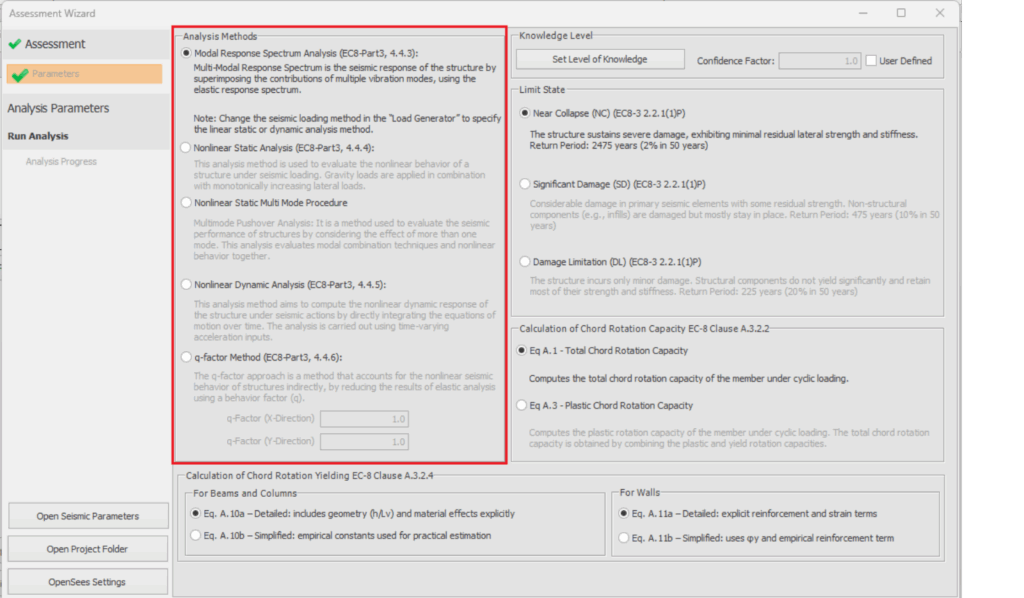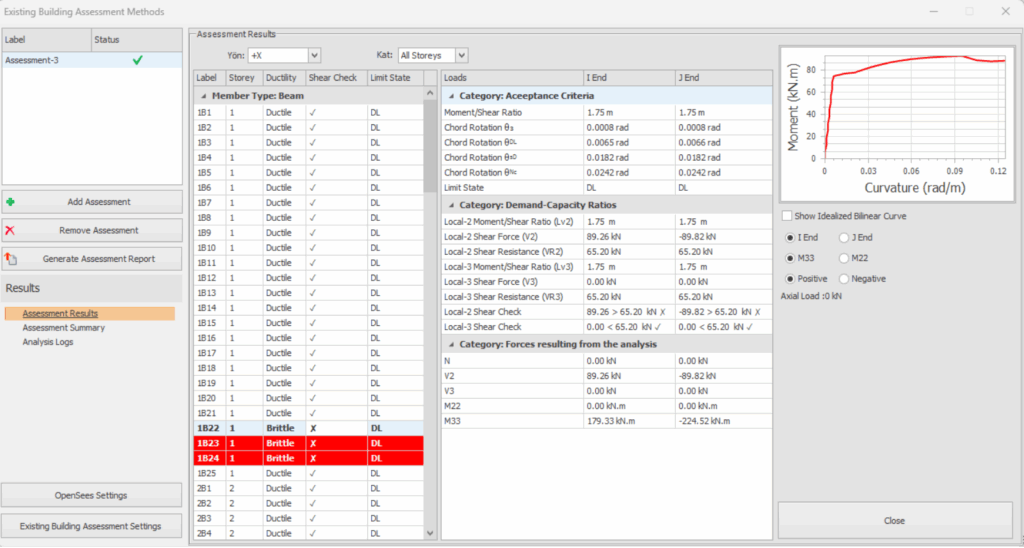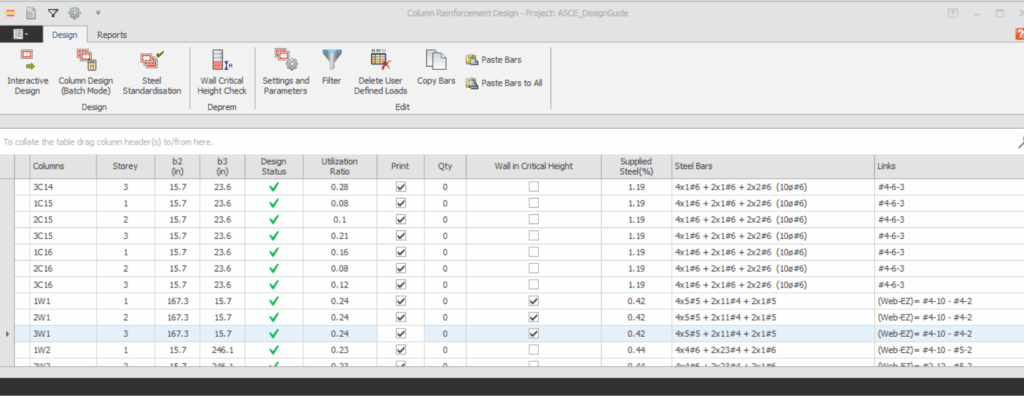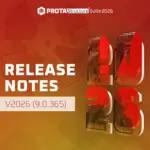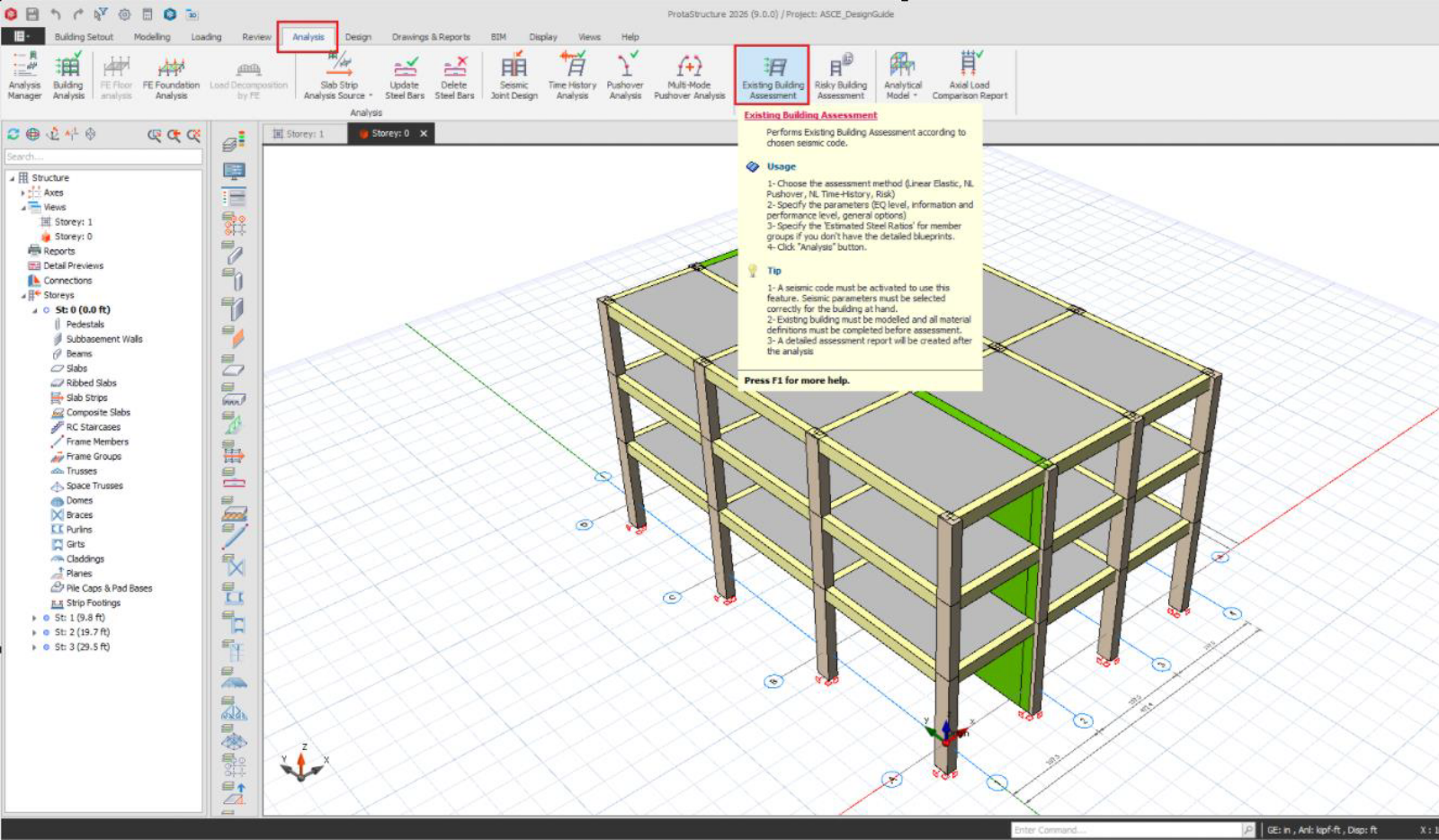
Assessment & PBD to Eurocode 8 Part 3
Introduction
This design guide provides a detailed overview of how to assess the seismic performance of existing structures in accordance with Eurocode 8 Part 3 (EN 1998-3:2005) and Eurocode 8 Part 1 (EN 1998-1:2004). ProtaStructure software, moreover, offers a comprehensive workflow for the seismic assessment of reinforced concrete buildings, supporting both the strengthening of undamaged buildings and the repair of earthquake-damaged structures, while ensuring compliance with Eurocode principles. Thus, the software enables engineers to perform performance-based assessments, select intervention strategies, and generate comprehensive evaluation reports. This Eurocode 8 Assessment Framework ensures that both seismic input and assessment logic fully comply with Eurocode methodology, providing a robust foundation for structural evaluations.
Eurocode 8 Assessment Framework the Eurocode 8 Assessment Framework defines performance requirements at three main Performance Limit States (LS), basing them on structural damage levels:
Near Collapse (NC)
The structure sustains severe damage, yet exhibits minimal residual lateral strength and stiffness. Although vertical elements may still support gravity loads, most non-structural components collapse, and significant permanent drifts occur. Engineers deem it unlikely for the structure to survive another seismic event and consider the structure on the verge of collapse. This state corresponds to a return period of 2475 years for ordinary buildings.
Significant Damage (SD)
The structure experiences notable damage with some remaining lateral strength and stiffness. Vertical elements continue to carry loads, and non-structural components such as infills and partitions are damaged but generally remain in place. Moderate permanent drifts occur, and repair may be uneconomical. For ordinary buildings, this state is associated with a 475-year return period.
Damage Limitation (DL)
The structure incurs only minor damage. Structural components do not yield significantly and retain most of their strength and stiffness. Non-structural elements may develop widespread cracking, but engineers can repair the damage, and permanent drifts remain negligible. The structure remains functional without requiring intervention. This state corresponds to a return period of 225 years for ordinary buildings.
Knowledge Levels and Confidence Factors the Eurocode 8 Assessment Framework defines three Knowledge Levels (KL) for selecting analysis types and confidence factor values:
KL1 – Limited Knowledge (EC8-Part 3, Clause 3.3.2)
Users partially know the geometry; detailing is unavailable; and they assume default material properties. Users must only use linear analysis methods.
KL2 – Normal Knowledge (EC8-Part 3, Clause 3.3.3)
Engineers know the overall geometry and member sizes from an extended site survey or outline construction drawings. They know the mechanical properties of materials either through extended in-situ testing or from original design specifications. This level permits both linear and nonlinear analyses.
KL3 – Full Knowledge (EC8-Part 3, Clause 3.3.4)
This represents the highest knowledge level, where engineers comprehensively know the overall structural geometry, member sizes, detailing, and material properties from a comprehensive site survey, complete drawings, or original test reports. This level allows nonlinear analysis methods with the lowest confidence factor. Engineers apply corresponding Confidence Factors (CF) to capacity calculations: 1.35 for KL1, 1.20 for KL2, and 1.00 for KL3. ProtaStructure allows users to determine the knowledge level and assign the confidence factor accordingly.
Structural Analysis Methods ProtaStructure supports various structural analysis methods for assessing existing buildings in accordance with EN 1998-3:2005:
Lateral Force Analysis (Linear)
Engineers use this method when the fundamental mode of vibration predominantly governs the structural response. The method distributes seismic actions as lateral forces along the height of the building.
Multi-Modal Response Spectrum Analysis (Linear)
This method determines the seismic response of the structure by superimposing the contributions of multiple vibration modes using the elastic response spectrum. Consequently, this method provides a more accurate representation of structural behavior for irregular, tall, or torsionally sensitive buildings compared to single-mode methods.
Nonlinear Static Analysis (Pushover)
This method evaluates the nonlinear behavior of a structure under seismic loading. It also provides crucial information such as the capacity curve, plastic hinge development, and collapse mechanism.
Nonlinear Time History Dynamic Analysis
This method computes the nonlinear dynamic response of structures under seismic effects by directly integrating the differential equations of motion over time. Thus, it allows direct modeling of energy dissipation, loading/unloading cycles, and damage accumulation at the element level.
q-Factor Approach
This approach accounts for nonlinear seismic behavior indirectly, by reducing elastic analysis results using a behavior factor (q). This factor represents the expected ductility level and energy dissipation capacity of the structure. Furthermore, this method is suitable for preliminary assessments because it does not directly capture local failures or plastic hinge formation.
Key Assessment Checks The software performs detailed checks on structural elements:
Shear Capacity Check
This check is mandatory for beams, columns, and walls for all performance levels (NC, SD, DL). Engineers classify elements as ductile if VEd ≤ VR (shear demand ≤ shear capacity) and brittle if VEd > VR. Brittle elements fail prior to flexural yielding, and engineers must retrofit them or exclude them from nonlinear deformation checks.
Beam Chord Rotation Check (Flexure)
This check verifies that the beam chord rotation demand (θEd) from seismic analysis remains within the element’s ultimate rotation capacity (θum), particularly at the Near Collapse (NC) level. Eurocode 8 makes specific adjustments for lack of earthquake detailing, lap-spliced deformed bars, and smooth bars with hooks.
Beam-Column Joint Verification
This check assesses the shear safety of beam-column joints by comparing the design shear demand (Vj,Ed) with the shear capacity (Vj,Rd).
Application and Reporting in ProtaStructure the software facilitates Eurocode 8 Part 3 assessment through the following capabilities.
Defining Existing Reinforcement
Users can do this by entering detailed reinforcement from plans or by defining approximate reinforcement ratios, with member-based approaches taking priority.
Specifying Seismic Parameters
This includes response spectrum parameters, design spectral acceleration, and site class.
Selecting Analysis Methods and Limit States
Users achieve this through an intuitive “Assessment Wizard”.
Generating Comprehensive Reports
After analysis, ProtaStructure generates detailed results screens and reports summarizing assessment parameters, element performance by limit state, ductility classification, joint shear checks, and member-level shear and beam chord rotation checks. Consequently, these reports clearly highlight members that fail checks or that ProtaStructure classifies as brittle, indicating potential retrofitting needs.
In conclusion, the software’s integrated approach ensures robust and effective structural evaluations fully compliant with the Eurocode 8 Assessment Framework.
Additional Resources
For additional guidance or technical support, please contact Prota Software Inc. In addition, you can find more resources and practical examples on the Prota Software Community Page. This page includes Webinar Recordings, a Project Gallery, and our YouTube Channel.


